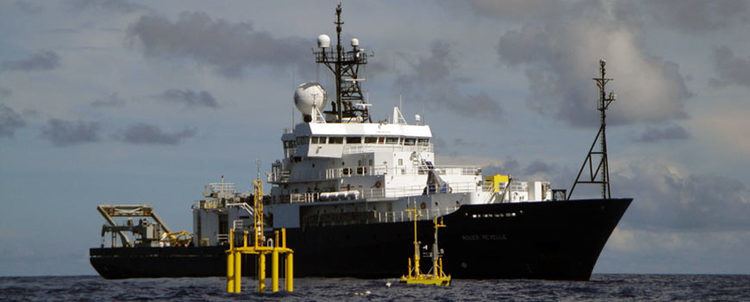Name Roger Revelle Laid down 9 December 1993 Launched 20 April 1995 Weight 3,568 tons Beam 16 m | Owner U.S. Navy Construction started 9 December 1993 Length 84 m Draft 5.8 m Builder Gulfport | |
 | ||
Namesake Roger Randall Dougan Revelle, a scientist, Naval officer, and scholar of the University of California, San Diego, founder of Office of Naval Research, and was one of the first scientists to study global warming and the movement of Earth's tectonic plates Operator Scripps Institution of Oceanography, University of California, San Diego under agreement with Office of Naval Research Acquired by the U.S. Navy, 11 June 1996, as RV Roger Revelle (T-AGOR-24) | ||
R/V Roger Revelle is an auxiliary general-purpose research vessel (AGOR) operated by Scripps Institution of Oceanography under charter agreement with Office of Naval Research as part of the University-National Oceanographic Laboratory System (UNOLS) fleet.
Contents
Built in Mississippi
Roger Revelle was built by Halter Marine Inc., Gulfport, Mississippi. She was laid down on 9 December 1993 and launched on 20 April 1995. She was delivered to the U.S. Navy 11 June 1996, as RV Roger Revelle (T-AGOR-24), a Thomas G. Thompson-class oceanographic research ship.
Navigational capabilities
Oceanographic data acquisition sensors and processing systems
As of 2014, the ship comes standard with these set of Oceanographic sensors; with provisions, space, and modularity to add a variety of other scientific sensors and equipment.
Winches
Support equipment
Computing environment
Shipboard computer systems consists of a cluster of linux (CentOS) servers capable of up to 20 Terabytes of available and expandable cruise data storage in RAID6 configuration. The cluster provides email, intranet, NAS, DHCP, proxy, SAMBA, Active Directory, data processing, and data procurement services. Internet is provided using a combination of UNOLS-designed proprietary satellite system (C-Band), shore cellular network (3G, 4G/LTE), and/or Inmarsat FleetBroadBand (L-Band). In addition to the cluster, there's a wide array of data acquisition computers hooked up to a modular display array. All live processed data from the ship's standard set of acquisition systems is displayed on the array, and provide live feedback of the ship's underway data. There are repeating displays in the main lab, and hydro lab that shows MET and navigation data.
The various Windows, Linux, and Mac acquisition machines perform data acquisition, archiving and processing functions on many of the permanently installed data collection systems. All data is centralized in the cluster.
Sister ships
The Roger Revelle and three other research ships were all built to the same basic design. The three sister ships are R/V Thomas G. Thompson (UW), NOAAS Ronald H. Brown (NOAA) and R/V Atlantis (Woods Hole).
